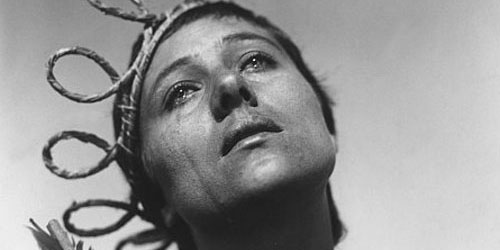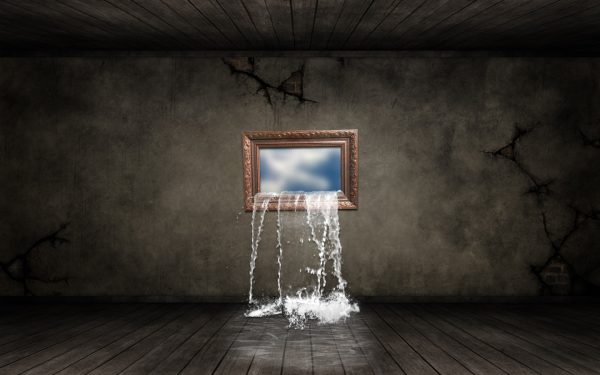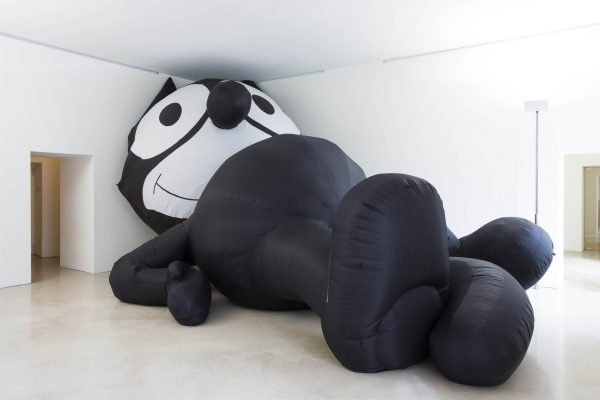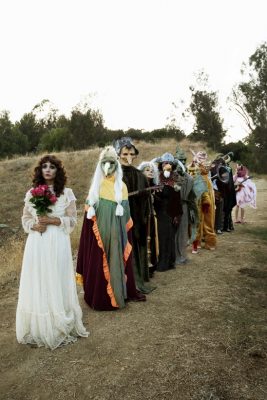To read Shola von Reinhold’s ornate, multi-layered novel LOTE (2020) is to encounter a baroque mind. It tells the story of a queer Black thinker named Mathilda, in the present day, who is transfixed by an historical era that does not adequately represent her. Via diaries, letters and photographs she discovers the Bright Young Things, as they were fondly known, a set of decadent and disobedient socialites who threw elaborate, drug-fuelled parties across the 1920s and 30s. Through a cocktail of hedonism, androgyny and queer love, this group — along with their counterparts in the Bloomsbury Group — began to deconstruct patriarchy a century ago, and seem to offer Mathilda an escape from the present, with all its social and racial barriers – except they don’t. The catch is that members of both groups were, by and large, spoilt, white and rich. Despite their experimental poetry, queer lifestyles, and self-fashioning (‘frock consciousness’, as Virginia Woolf called it), radicality is countered by entitlement; after all, rich people have always made exceptions of their own kind.
The novel is underpinned by a question: Why are so few queer Black British modernists documented in those flourishing interwar years? Through an impressive mix of scholarship and historical fiction, Reinhold sets out to unravel and challenge this history, prying open the ledgers to ask how and why the received archive is so overwhelmingly white. ‘I would venture to guess that Anon, who wrote so many poems without signing them, was often a woman,’ Woolf famously wrote. ‘And/or Black,’ amends Reinhold – and with this as a sort of epigraph, their novel begins both a critique and a celebration of the era, setting out to recover the lives of Black Anons, and to conjure voices that didn’t make it into history.
The novel opens in the National Portrait Gallery archive in London, circa 2019. Mathilda has been recruited, without pay, to sift through a donation of photographs. Not yet captioned, these snapshots have been gathering dust in the gallery for a decade, their significance undetermined. Mathilda is a self-declared ‘Arcadian‘, her term for a pleasure-seeking yet political archivist, who strives to enhance her present with visions of the decadent past. She takes an almost narcotic delight in glimpses of the Bright Young Things, particularly the ‘brightest’ member, as he was once christened, the muse Stephen Tennant. Those neglected photographs turn out to be scenes of ‘modernist Alpine Queerdom’: exquisite, if familiar, images of the Bright Young Things jetting off on a skiing holiday (one particular jewel captures Tennant hand-in-hand with his lover, the war poet Siegfried Sassoon). But then Mathilda comes across an image unlike one she’s ever seen before: a costume party held at Lady Ottoline Morrell’s Garsington Manor, where her beloved Tennant appears beside two women bedecked as Renaissance angels. One flaunts a pair of feathered wings and a fine chain mail suit, grasping a champagne coupe – and her skin is black. Her afro doubles as a kind of halo, ‘brushed into a commanding nimbus’, enthuses a mesmerised Mathilda. ‘It made me ache with jealousy and bliss.’ Entranced, she steals the photograph, determined to learn more about this Black pleasure-seeker – and thus the book slips into gear. Who is this Black Bright Young Thing, and why is she absent from the history books? As Mathilda will discover, she is a Black Anon who exists only in fragments – appearing in scraps of gossip (often defamatory), and cited in sources that can’t be tracked down. When invoked by her contemporaries, she is exasperatingly anonymised as ‘the Mulatto paintress’ or ‘the Negress of Dun’. A disembodied figure, she turns out to be a lost Modernist poet, whom the prejudices of her day, combined with the bigotry of successive archivists, have vanished from the archive.
Hermia Druitt – whose life Mathilda comes to uncover – is an invention of Reinhold. They insert Druitt into actual history in order to show how she really might have existed, in turn allowing her to stand in for other Black Anons who have been irretrievably lost to the present. When it comes to representing non-elite, non-white lives, the historian’s hands are often tied by the absence of primary sources – letters, diaries, artworks – a reflection of who gets to write, and what sources are deemed worthy of the archivist’s attention. Reinhold does what a historian could not, inventing a figure – a Scottish-born Black poet of ‘Low Bloomsbury’, a queer woman and friend of Tennant, a guest at Garsington, a minor figure who should have been a major one, had the world not been so snobbish, cruel, and often racist.
Partway into the novel, Mathilda orders a cocktail called a Poussé Cafe Royal, one popular with her heroes, which ‘came served in a tulip glass and consisted of a rainbow of alcohols floating on top on one another’. In a way this image encapsulates the novel itself, which plays out on many levels, and in many sources, all at once. To sip the novel’s prose is to be whisked away on a fractal journey, in which the author transfigures into an eclectic ensemble of voices, shape-shifting through different forms and styles. First there is Matilda’s narrative in the present, in which she travels to Europe on a quest to locate Druitt’s missing poem. At the same time, stratified into the book are chapters of an invented academic text, Black Modernisms – missing from libraries, but which Mathilda hunts down – in whose pages a professor named Helen Morgan follows on Druitt’s trail a decade earlier. Finally there is Druitt’s own story, inserted into the novel by Reinhold, and encountered in invented primary sources: letters written by friends, and fragments of Druitt’s own memoir.
The strategy of writing Druitt into the archive is a form of historical revisionism. In his clever novel Confessions of the Fox (2018), Jordy Rosenberg deployed the same tactic to address the unsatisfying, and often violent, representation of trans people in the archive, who are encountered though documents that sexualise, medicalise or make monstrous. LOTE adds to this emerging revisionist literature. Cocooned within Mathilda’s narrative are alternatives to actual history, hatched by way of radical scholarship, as Reinhold utilises sources that obscured, and stole from, the Black world, and plunders the archive back.
Mathilda’s first-person narrative is written with intoxicating beauty, co-opting the highfalutin party-prose of the Bright Young Things as she emulates Druitt – describing the present as her hero might have done – to report on ‘gowns the colour of algae’, ‘a bowl of amethyst punch’, ‘a wheat coloured wig’. Meanwhile, Reinhold’s scholarship, distributed across the novel as chapters of Black Modernisms, sets out some of the harsh historical realities. If, writing from the present, Mathilda tends to indulge and rose-tint the era, as Morgan, Reinhold brings Druitt to earth.
LOTE is a novel about coming to terms with one’s heroes, as its author – via Mathilda and Morgan – grapples with both the possibilities and failures of queer British literary history. How receptive were the Bright Young Things and ‘the Bloomsberries’, as they are affectionally called, to friendship across the so-called colour line? Through Morgan’s scholarship, which Mathilda devours, Reinhold is able to explore the the spectrum of possibility, to rub up against, and expose, the era’s limits. As a queer woman, a poet and aesthete, Druitt would no doubt have sought out the group, but who would her allies have been? In the 1920s and 30s, there really was a queer intersection between the Harlem Renaissance and the Bright Young Things: the so-called ‘Faggot’s Ball‘ in Harlem in 1929 attended by the British; in turn, queer Black Harlemites like Richard Bruce Nugent – whose unpublished 1920s novella Geisha Man Reinhold cites as an influence – visited London. What’s more, members from both sets sojourned in Paris, where the Négritude movement and relaxed attitudes to homosexuality worked in everybody’s favour.
Instances of intellectual fellowship can also be pinpointed: as Black Modernisms recounts, the British eccentric Edith Sitwell formed a friendship with Trinidadian historian C.L.R. James; Garsington hostess Lady Ottoline Morrell befriended the singer Josephine Baker. Central to the plausibility of Druitt’s story is the American shipping heiress Nancy Cunard, herself a writer who established a Modernist publishing house in the 1920s. Reinhold identifies Cunard as an available historical figure through her intellectual and romantic union with the Black jazz musician Henry Crowder, which caused outrage among Americans at the time (Cunard was disowned and disinherited). Together Cunard and Crowder published a number of canonical African-American writers in the 1930s through the Hours Press, among them Langston Hughes and Zora Neale Hurston. This fact of history gives Reinhold room for more: in their historical insertion, Druitt’s lost poem was published by Hours, but subsequently vanished – perhaps intentionally suppressed.
This affirmative history is important to Reinhold: it allows for the possibility that Druitt existed. And yet the era’s hurdles and hazards are made plain too. To be a Black poet among British aristocrats would have been to occupy a slippery position. Intersections between the British Modernists and the Black world were at best fleeting. The avant-garde was a product of its day, an era steeped in racism, its colonial legacy largely unchallenged. If at times Garsington and Bloomsbury were queer havens, where Druitt was treated as an exception, racism crouched in every ballroom corner, waiting to pounce. At dazzling costume parties, Druitt is mistaken for the singer Josephine Baker (one of the few high-society Black women adequately recorded in this period), or else a maid – typical, explains Morgan, in an era when Black female figures entered Bloomsbury ‘sometimes for entertainment, sometimes as guests’. To become a poet and to remain in the set, Druitt would have had to make the most of the Modernists’ exoticisation of Blackness (as Morgan puts it, ‘White Bohemianism’s… unsatisfying but sometimes useful, reception of “the other”‘). At the same time, she would have been grappling with everyday acts of racism – turned out of restaurants who refuse to serve Black people; thrown off a train by outraged Americans; struggling to find accommodation in London outside of the slums.
Morgan’s text examines Woolf at length – clearly Druitt and Mathilda’s hero, perhaps Reinhold’s too. Woolf’s case is difficult, with ultimately more strikes than connections: yes, her friendship with the Black actor Paul Robeson; yes, Hogarth Press published a political pamphlet by C.L.R. James; but Woolf using the n-word in an unforgivably racist diary entry; Woolf in blackface as part of the Dreadnought Hoax; Woolf eliminating ‘negress’ from her definition of a woman in her feminist treatise A Room of One’s Own (1929).
Alongside this examination of the Modernist archive runs the story of Mathilda’s present. A natural fop, bright and idle, she is in the process of self-fashioning as a Druitt of the twenty-first century. But just as the glorious past fails her, the contemporary world disappoints too, leaving her in a double bind. Like the poet before her, Mathilda’s circumstances are unimaginable to the white upper-middle-class set she has entered, a shuffling peer-group of modern-day, lacklustre Bright Young Things who have names like Griselda and Hector, work in galleries or design studios, fetishise Brutalist estates they never grew up on, and read Continental Theory for breakfast. On her obstacle course to find Druitt, Mathilda spots a residency in Dun, an unspecified European town, onto which she is accepted and given a stipend; yet, to her horror, she is forced into line with group of thoroughly Drab Young Things – zealous followers of an imagined theorist named John Garreaux (a sort of purposely vague blend of white male figures like Deleuze & Guattari, Guy Debord, Roland Barthes, et al). Garreaux, poses Reinhold – in a mode of delightful satire – established a branch of performance art in the 1970s called Thought Art. His followers all speak Garreauxvian nonsense, and Reinhold’s descriptions of Garreaux’s theory are perfectly hilarious, capturing the worst of white Continental Theory as it intersects with Art-speak. One resident regurgitates the lingo,
seeming for moments to make sense – but then came the buzzwords, the catchphrases. He spoke opposites and odd couplings: the cold tinny argot of Pyramid Schemes came out his mouth coiled around something borderline Churchy. Then what sounded like Self Help suddenly hardened, grew spikes and became Continental Theory.
Garreaux, like the best cult leaders, is always anticipated, strangely absent, whispered about, privately worshipped. Finally he appears towards the end of the book, a sort of robotic neoliberal super-curator in the style of Hans Ulrich Obrist: ‘A lithe silvery man in acid green active-wear and tinted glasses.’
Alongside Mathilda’s hunt for Druitt, Reinhold stages an ideological battle between Garreauxvians and Arcadians. The devotees of the former, assembled in Dun, practise a form of self-denial which operates as a satirical opposite to identity politics. Garreauxvians declare the death of art and authorship, the ultimate culmination of their projects being an incineration of their work, leaving only a post-art vial of smoke. Meanwhile, Mathilda the Arcadian is devoted to the material trace, spending her days transfixed by the treasures of the archive. As these two opposing ideologies lock horns, each trying to convert the other, Reinhold mounts a complex critique of both standpoints, which crests in a witty takedown of postmodernism. In a typically elaborate manner, Reinhold recounts third-hand – via a fictional article written by a Black artist and recounted by Mathilda – the opinion that people who think painting is dead should stop painting, because the endless call for the death of painting, in all its varieties, has nothing to do with art at all, but with white culture itself in crisis – in the morgue, so to speak. Mathilda explains that this ingenious article, titled ‘White People Shouldn’t Paint’, argues that such death-pronouncements, ‘made after the luxury of several centuries unhampered access to the form, wilfully ignore the fact that many have simply not had the access.’ In other words: dead for who? It’s one of the (many) moments where Reinhold seems to provide a key, offering up the novel’s raison d’être, and commencing its exposition. Mathilda continues: ‘The arguments could be reapplied to fiction, literary studies, classical studies, and so on. Indeed, anything that has been claimed dead before others have been able to glut themselves upon it, and in doing so, provide new insights.’
As the novel unfolds, Garreauxvian thinking is shown to be an impediment to Druitt’s legacy. Through a web of secrets that Mathilda untangles in the final chapters, Druitt comes to embody the way in which Black culture across history has influenced white European culture, and yet been denied provenance. This is already well-trodden territory in relation to the birth of modern art in the form of Cubism. Pablo Picasso, among others, refused to acknowledge the influence of masks from the Niger-Congo region on his radical break with Impressionism – despite photographic evidence demonstrating otherwise. Throughout LOTE, Reinhold’s chorus of voices argue for, and cast light on, the ubiquitous cultural ransacking that has taken place over centuries, exposing the way in which white culture has stolen from Black culture, damning and subjugating the Black world all the while. In exchanges throughout the novel, Reinhold’s characters put forward a range of suspected provenances: that the decorative volute found on Iconic columns can be traced back to the coils of Black hair; that the radical fashions of certain Versailles royals were influenced by the opulence of Black courtiers.
But it does not stop there. Reinhold also demonstrates the way in which offences against Black art are two-fold, and play out across time – the problem of thieving artists in their day, combined with the prejudices of archivists who manage history. Before she leaves for Dun, Mathilda visits the house of a Black activist named Agnes who insists that museums and institutions have played a role in actively suppressing Black art. Agnes shows Mathilda a cabinet full of ‘evidence’ she has rescued from archives, where they had been neglected and left to perish. What follows is a litany of missing, imagined artefacts: paintings by a forgotten Afro-Florentine master; an original tarot card from the Visconti–Sforza deck showing a Brown priestess; a daguerreotype of the Black Pre-Raphaelite model Fanny Eaton; and fragments of a lost Modernist masterpiece written by a pair of Dutch Caribbean twins. To uncover Druitt’s life, as Mathilda does, is to not only contend with her dissatisfying peers, but to come up against the choices of people who make and control archives. Who are the gatekeepers? When it comes to storing and labelling, small oversights can have significant consequences, rendering an artefact invisible to researchers of the future. Agnes shows Mathilda one such erroneously captioned painting, depicting a Black Renaissance courtier, but ridiculously labelled as a statue of a white merchant. Pondering the archivists’s mindset, Agnes asks:
Did somebody deliberately choose ‘The Statue’ as a title and fabricate the accompanying information…because they couldn’t stand the idea it depicts a wealthy Black person in Venice at this period? Or did they just look at it and perceive a statue in Black material of a white person, because that was more believable to their subconscious than a portrait of a statuesque Black person in Renaissance Italy?
A racist gaze at one end of the scale, and conformation bias on the other: Reinhold shows how archives are the product of the eyes and minds that make them.
Through Druitt’s story and Agnes’s amassed artefacts, Reinhold exposes the way in which certain strains of preservation and archiving amount to cultural treason. The questions posed in LOTE can be seen as part of a wider discussion, over the past decade, around the decolonisation of museums, and the call to interrogate the way that artefacts, particularly Black artefacts, have been acquired and preserved. Torn from life systems and enclosed in galleries, so often colonial spoils are made to speak for narratives that are not their own. The novel enacts a kind of decolonisation of Modernism via fiction, showing how new gatekeepers could affect how knowledge is made and received.
That archive is, in a British context, an archive of aristocrats. Midway through the novel, Mathilda confronts what it means to want a Black Bright Young Thing, a figure drawn from a world that, in the final analysis, is overwhelmingly white. Does this amount to – as bell hooks argues in Is Paris Burning? (1992), an essay that Mathilda reads – a form of cultural assimilation, to have involuntarily ‘worshipped at the throne of whiteness’? It’s a thorny proposition, and I love that Reinhold takes this on, if only for the answer they provide in an exquisite and tender passage that offers a persuasive counter-reading to hooks’ logic. During the process of entering, altering and remaking the (white) archive in one’s own image, something else happens, Reinhold argues:
Between the ‘assimilation’ and the fantasy there was another space which is not about championing the thing that speaks against you… but instead about showing your ability to embody the fantasy regardless, in spite of, to spite, and in doing so extrapolate the elegance, the fantasy, Romance…. and show it as a universal material to be added to the toolbox.
Those five words: ‘in spite of, to spite.’ Not assimilation, but a thrilling land-grab, a re-mapping of knowledge and a forging of new tools that move beyond the archive’s voids. In choosing to conjure Black voices through historical revisionism, rather than, say, Afrofuturism or pure fiction, the novel produces a new archive – a radical reference tool populated by real and imagined historical figures, Anons who have been festooned, fleshed-out, and freed from the rude imposition of marginality, anonymity and defacement.
share
ABOUT THE CONTRIBUTOR
IZABELLA SCOTT is an editor at The White Review.




